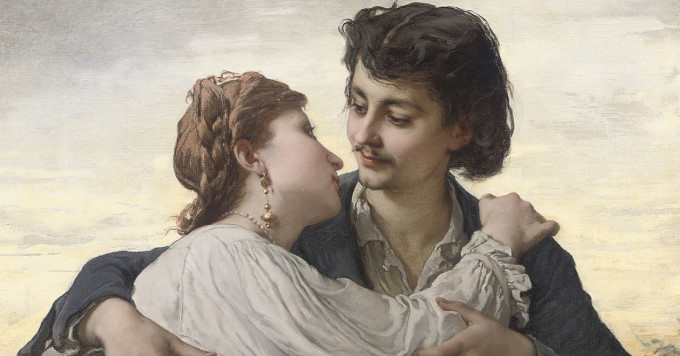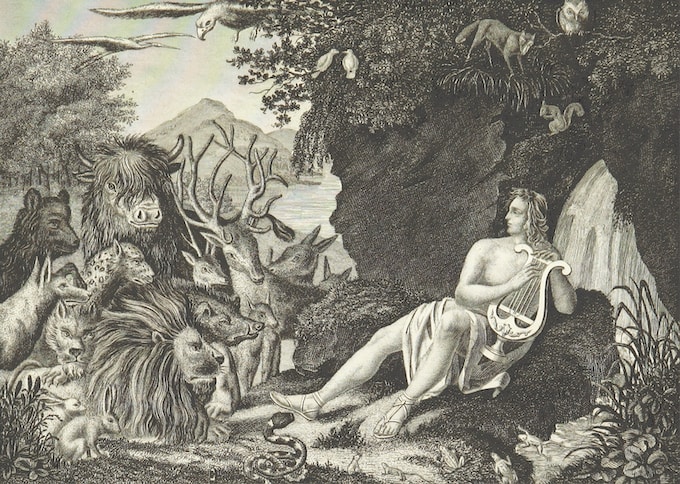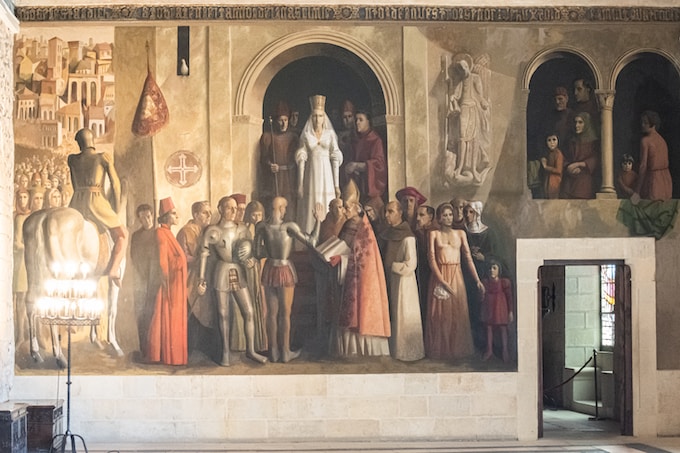Infidelity has been a source of debate and conflict since the beginning of time. While it is a sensitive and personal topic, there is no denying its prevalence across cultures and across centuries.
In this article, InfidelityHub will dive into the history of infidelity to learn about how it has been viewed in different times and contexts throughout the ages, and to discover whether there are lessons to be learned from our historical predecessors.

At its core, infidelity is a breach of trust within a relationship. In some cultures, it is seen as a purely physical act, while in others it can be linked to an emotional betrayal.
In its simplest definition, it is any act of intimate behavior between two people that violates the trust of one or both partners. This could involve sexual activity, emotional intimacy, or even just the lack of trust in a relationship.
From a historical standpoint, infidelity has been a source of shame, pain, and anguish for generations. However, it has also been a source of inspiration for many authors and artists. From Ancient Rome to the Renaissance, infidelity has been a central topic in literature and art, and continues to be a relevant issue in contemporary culture.
In Ancient Greece, infidelity was seen as a selfish and shameful act, and was often punished by death. In Ancient Rome, adultery was seen as a crime punishable with exile. Ancient Egypt did not have a specific law governing infidelity, but any sexual contact outside of marriage was considered taboo. On the other hand, in Ancient India, infidelity was not seen as a moral issue, but instead viewed as a practical one – if a husband had multiple wives or if a wife was unfaithful, it could be seen as a financial burden or an infringement upon a man’s honor.
In Medieval Europe, adultery was a serious offense, and any woman accused of adultery could be subjected to public humiliation and punishment. In Medieval Asia, there was a similar stigma around infidelity, and it was punishable by death in some cases. In Medieval Africa, infidelity was often considered a sign of disrespect and could lead to ostracization.
During the Renaissance, infidelity was often seen as a symptom of an immoral society and was frowned upon in most cultures. Prominent figures in the Renaissance like Lorenzo de' Medici of Florence and Henry VIII of England were not immune to accusations of infidelity.
However, at this time, infidelity was also a major source of inspiration for artists and authors. Writers such as William Shakespeare and Miguel de Cervantes explored infidelity in their works, while infidelity was popularized in art by figures such as Michelangelo and Titian.
In the 18th century, infidelity was seen as a degenerate behavior and was considered a sign of a moral decline. In the 19th century, infidelity was seen as a sign of a lax moral environment and was used as a source of inspiration for many authors. In the 20th century, infidelity was still viewed as a moral issue, but it was also seen as an issue of personal choice. However, it was still largely seen as a taboo and was punishable by law in some countries.
Throughout history, society has had a complicated relationship with infidelity. While it is often seen as a shameful act, it has also been a source of creative inspiration for many writers and artists.
In this article, InfidelityHub will explore the historical perspective on cheating in relationships and see how we can learn from our predecessors.
Ancient History
Infidelity has been around since the dawn of time, and many ancient cultures had their own unique views on adultery and infidelity. From Ancient Greece to Medieval Europe, infidelity has played a role in shaping the history of humankind. This article will dive into the various aspects of infidelity throughout ancient history and the cultural implications of it.
Infidelity in Ancient Greece
In Ancient Greece, adultery was a severe infraction that could lead to the death of the adulterer. For men, the penalty for adultery could be exile or death. For women, the penalty was usually death.

However, in practice, it was very difficult to prove a charge of infidelity, and so the penalty was rarely enforced. Despite this, it did not stop the Greeks from having a strict social attitude towards adultery.
Infidelity in Ancient Rome
In Rome, infidelity was also viewed as a severe crime. As with Greece, the penalty for adultery was often death. However, in the Roman Republic, the punishment was usually exile as it was difficult to prove the charge.

This changed in the Roman Empire, where both men and women could be charged with adultery and face the death penalty.
Infidelity in Ancient Egypt
In Ancient Egypt, adultery was a serious crime, with punishments ranging from fines to death. The death penalty was rarely imposed, however, as it was difficult to prove the charge.

Adultery was seen as a breach of the social contract, and any man found guilty of adultery was forced to pay a hefty fine.
Infidelity in Ancient India
In Ancient India, infidelity was seen as a serious crime, and those found guilty could face a long list of punishments. For men, the punishments ranged from fines to a long-term prison sentence. For women, the punishments were more severe and could include fines, imprisonment, banishment, and even death. Adultery was also seen as a sin in Hinduism, which further contributed to its social stigma.

Throughout ancient history, infidelity was seen as a serious breach of social norms and contracts. For the most part, the punishments for adultery were severe, and the social stigma associated with it was just as powerful.
Despite this, infidelity was still a part of many cultures throughout the ancient world, with various views and punishments associated with it.
Medieval History
Infidelity has been a part of relationships throughout human history. In the Middle Ages, infidelity was a complex issue, especially in more religiously conservative societies. In Medieval Europe, adultery was a serious crime with severe punishments, such as public humiliation, fines, or even death.
In Medieval Europe, infidelity was treated as a breach of faith between a husband and wife, and was seen as a violation of the sanctity of marriage.
Medieval legal codes often prescribed harsh punishments for both partners involved in the affair. Laws could also be very specific, such as the English common law which stated that only married men could commit adultery, not married women.

In Medieval Asia, infidelity was also heavily frowned upon. In India, for example, the law prescribed severe punishments for any man caught in an adulterous affair. This law extended to the woman as well, and even prescribed punishments for any woman caught in an adulterous affair.
In China, adultery was also punishable by law, and could be punished by death depending on the severity of the crime.
In Medieval Africa, infidelity was also seen as a serious offense.
In parts of West Africa, such as the Yoruba, adultery was seen as a crime against the husband and was punishable by death.
In some African societies, infidelity could also be punished by humiliation and ostracism from one’s own community.
In Medieval Europe, infidelity could also lead to social ostracism, as it was seen as an offense against society. In the Middle Ages, the Church had a powerful influence on society, and any infidelity was seen as a sin and could lead to excommunication. As a result, the Church was very concerned with infidelity and took steps to punish those who violated the moral code.
Overall, infidelity in the Middle Ages was seen as a serious offense that could have severe consequences for both parties involved.
Adultery was seen as a violation of the sanctity of marriage and could lead to public humiliation, fines, or even death.
Therefore, it was essential for couples to remain faithful to one another in order to avoid punishment and maintain social standing.
Renaissance
The Renaissance ushered in a new era of art, literature, and philosophy that was characterized by a shift away from the traditional moral values of previous eras. This was also reflected in the cultural attitudes towards infidelity in relationships. Although infidelity was still not accepted by many, it was becoming increasingly common in the Renaissance period.
Prominent figures of the period, such as Niccolo Machiavelli and Leonardo da Vinci, were known to be involved in adulterous relationships. During this time, poets began to use the theme of infidelity in their works, including Shakespeare’s famous plays such as Othello and Romeo and Juliet.

Infidelity during the Renaissance also had a significant impact on art and literature. Many paintings of the period featured couples in compromising positions, implying unfaithfulness and adultery.
This was often used as a way to expose the hypocrisy of the aristocracy and challenge accepted principles of behavior.
In addition, literature began to explore the complexity of relationships in greater detail, including the effects of infidelity.
The works of authors such as Geoffrey Chaucer, John Donne, and William Shakespeare all explored the human condition and examined the moral implications of infidelity in relationships.
The Renaissance period also saw the emergence of a new type of literature known as the “courtly love” genre.
This genre revolved around the idea of a man’s romantic passion for a woman, and often featured themes of betrayal and adultery. Works such as The Decameron by Giovanni Boccaccio and The Faerie Queene by Edmund Spenser are two prominent examples of this type of literature.
Infidelity was still largely viewed as a taboo subject during the Renaissance period. However, the changing social attitudes and the emergence of courtly love literature began to open the door for a more open discussion of the subject. This paved the way for a greater understanding of the complexities of infidelity in relationships.
Modern History
The past century marked a shift in attitudes towards infidelity and adultery. In the 18th century, infidelity was seen as a form of rebellion and a sign of individualism, while in the 19th century, it was increasingly seen as a serious moral wrong. In the 20th century, infidelity shifted from being a moral wrong to a sign of individualism and freedom.
In the 18th century, infidelity was prevalent in the upper classes. Many aristocrats openly engaged in affairs, particularly those of the French court, and these affairs were often tolerated or even encouraged.
This was in part due to the revolutionary spirit of the period, which saw infidelity as a form of rebellion or individualism, but also due to the fact that divorce was not yet legally recognized.
In the 19th century, infidelity became increasingly seen as a moral wrong. Many religious and social reformers, such as Anthony Comstock, began to advocate for stricter laws against adultery and other forms of infidelity.
This shift in attitudes towards infidelity was also due to the increasing recognition of marriage as a sacred and moral bond.
In the 20th century, attitudes toward infidelity shifted again. With the emergence of the sexual revolution in the 1960s, infidelity was increasingly seen as a sign of individualism and freedom.
This was in part a reaction to the perceived moralizing of the 19th century, but also a reflection of the increasing acceptance of sexuality and the need for self-expression.
At the same time, infidelity also began to be seen as a symptom of wider social issues, such as a lack of communication in relationships, and pressures such as work or career demands.
This shift in attitudes towards infidelity has also been reflected in the trends of divorce rates, which began to increase significantly in the 20th century.
In the 21st century, infidelity continues to be a source of debate and discussion. Technology has had a profound impact on infidelity, with online dating and social media making it easier than ever for people to engage in affairs. Social media has also provided a platform for individuals to share personal stories of infidelity or seek support. As a result, infidelity has become a much more public issue than it was in the past.
Conclusions
The history of infidelity is filled with stories of betrayal, deceit, and scandal. From Ancient Greece to the present day, infidelity has been an unfortunate yet persistent aspect of human relationships.
In examining cases of infidelity throughout history, we can gain insight into the motivations behind these actions and the consequences of our choices.
From the examples discussed in this article, we can draw some important conclusions about infidelity.
First, infidelity is a universal phenomenon, and it has been present in some form throughout recorded history. Second, the motivations for infidelity vary, but often involve a desire for emotional or physical intimacy, as well as a need for revenge or a search for power. Third, the consequences of infidelity are far-reaching and can have a negative impact on both the parties involved, as well as their families and communities.
When it comes to contemporary infidelity, we can learn from the lessons of history. We must be aware of the potential consequences of our actions, and understand that our choices have the power to shape the future of our relationships. We can also learn from the mistakes of those who came before us, and strive to make more conscious decisions in our own lives.
Finally, it’s important to remember that while the history of infidelity is often filled with tragedy, it can also be a source of insight and understanding.
In reflecting on the stories of those who have gone before us, we can gain a greater appreciation for the complexities of relationships, and a deeper understanding of the power of human connection. By studying the past, we can take a closer look at our own relationships, and strive to build more meaningful and lasting connections with those we care about.
